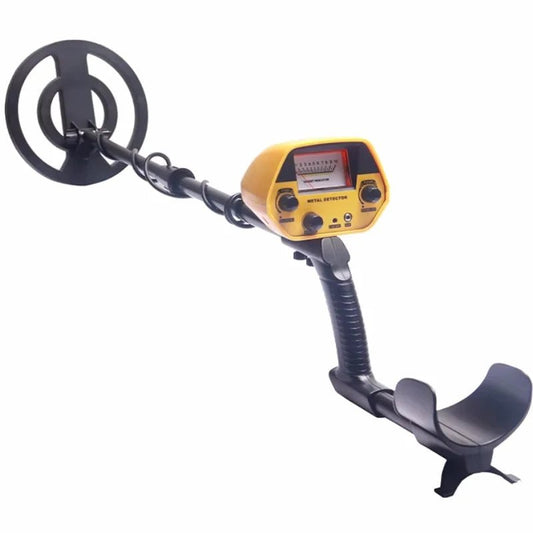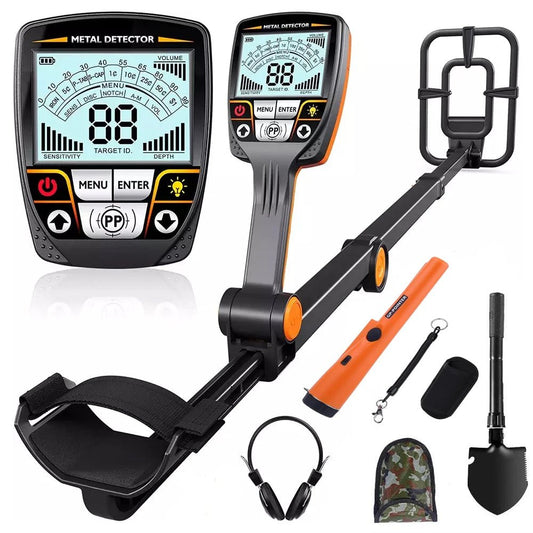
How to Metal Detect in the Woods: A Comprehensive Guide for Treasure Hunters
Share
Metal detecting in the woods offers a unique and exciting opportunity for treasure hunters.
The dense foliage and rich history of wooded areas can hide a wealth of artifacts and valuable items waiting to be discovered.
This comprehensive guide will explore how to metal detect in the woods, providing expert tips and techniques to enhance your woodland treasure hunting experience.
Why Metal Detect in the Woods?

Before we dive into the how-to, let's consider why the woods are an excellent place for metal detecting:
Rich History: Many wooded areas have a long history of human activity.
Less Competition: Fewer detectorists venture into the woods compared to beaches or parks.
Preserved Artifacts: Forest soil can help preserve metal objects for longer periods.
Diverse Finds: From ancient relics to modern lost items, woods offer a variety of potential discoveries.
Essential Equipment for Metal Detecting in the Woods

To successfully metal detect in the woods, you'll need the right gear:
Robust Metal Detector: Choose a detector with good discrimination and pinpointing features.
Sturdy Digging Tools: A strong trowel or small shovel is essential.
Pinpointer: Helps locate small objects in leaf litter and soil.
Protective Clothing: Long sleeves and pants to guard against scratches and insects.
GPS Device: For marking find spots and navigating dense forest.
First Aid Kit: Safety should always be a priority in remote areas.
Tips for Metal Detecting in the Woods
Research Historical Maps: Identify old trails, homesteads, or campsites.
Look for Natural Gathering Spots: Focus on flat areas near water sources or old trees.
Follow Old Fence Lines: These often mark property boundaries and can lead to interesting finds.
Check Around Tree Roots: Objects can accumulate in these areas over time.
Be Patient with Ground Balance: Adjust your detector for mineralized soil common in forests.
Move Slowly and Methodically: Dense vegetation requires careful sweeping techniques.
Techniques for Effective Woodland Metal Detecting

1. The Grid Method
Divide your search area into a grid.
Systematically cover each section to ensure thorough detection.
2. The Spiral Technique
Start from a central point and move outward in a spiral pattern.
Useful for covering circular areas around specific points of interest.
3. The Zig-Zag Approach
Move back and forth across the search area in a zig-zag pattern.
Effective for covering linear features like old trails or fence lines.
Challenges of Metal Detecting in the Woods
Metal detecting in the woods comes with unique challenges:
Dense Vegetation: Can make swinging your detector difficult.
Root Systems: May interfere with detector signals.
Uneven Terrain: Requires careful footing and adjusted sweeping techniques.
Wildlife Encounters: Be prepared for encounters with forest animals.
Legal Considerations of Metal Detecting in the Woods

When metal detecting in the woods, always:
Obtain Necessary Permissions: Check if you need permits for public lands.
Respect Private Property: Never trespass on private woodland without permission.
Follow Leave No Trace Principles: Fill in all holes and remove any trash you find.
Report Significant Finds: Historical artifacts may need to be reported to authorities.
Best Times for Metal Detecting in the Woods

Consider these factors when planning your woodland detecting trips:
Seasons: Early spring or late fall when foliage is minimal.
Weather: After rain when the soil is softer and more conductive.
Time of Day: Early morning when the forest is quieter and cooler.
Advanced Tips for Woodland Metal Detecting
For those looking to take their skills to the next level:
Use Aerial Photography: Study historical aerial photos to identify old structures or clearings.
Employ LIDAR Data: If available, LIDAR can reveal hidden landscape features.
Join Local History Groups: Gain insights into lesser-known historical sites in your area.
Experiment with Different Coils: Smaller coils can be more maneuverable in dense woods.
Conclusion: Mastering the Art of Metal Detecting in the Woods.
Learning how to metal detect in the woods effectively opens up a world of exciting possibilities for treasure hunters. The combination of rich history, preserved artifacts, and the thrill of exploration makes woodland detecting a uniquely rewarding experience.
Remember, successful metal detecting in the woods requires patience, preparation, and respect for both the environment and historical preservation. By following the tips and techniques outlined in this guide, you'll be well-equipped to uncover hidden treasures while enjoying the serene beauty of the forest.
Whether you're searching for Civil War relics, lost pioneer artifacts, or modern valuables, the woods offer endless opportunities for discovery. So grab your detector, pack your gear, and venture into the forest – who knows what secrets you might unearth beneath the canopy?
Happy hunting, and may your woodland adventures be safe, responsible, and filled with exciting finds!




